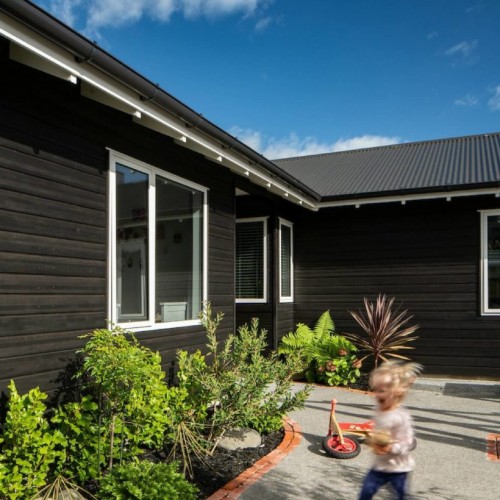
Capital gain on a main home can be taxed under new exclusion
Categories
When the Government recently announced the increase in the brightline period from 5 years to 10 years it also amended the main home exclusion. The impact of this change is that it is now possible that a gain on a residential property can be taxed even if it has been used predominantly for a main home.
The new main home exclusion applies to residential land acquired on or after 27 March 2021.
For residential land acquired before 27 March 2021, the main home exclusion would not tax disposal of land if it was sold within the brightline period and it was used predominantly for a dwelling that was a main home. This exclusion focused on the amount of time the dwelling was used as a main home. If it was used more than 50% of the time as a main home then the brightline test did not apply to any of the gain on disposal.
This old main home exclusion applied on an all or nothing basis.
For residential land acquired on or after 27 March 2021 the main home exclusion essentially only applies for the number of days the main home exclusion is met. The main home exclusion applies to the number of days it is used as a main home. If during the brightline period the property is used other than as a main home, then the days of “other use” are still treated as being used for a main home if the “other use” is for a continuous period of 365 days or less. If the “other use” is a continuous period of more than 365 days then the main home exclusion does not apply for these days.
The result of the new main home exclusion is that it requires any gain to be apportioned between main home use and other use. This is done by multiplying the gain made on disposal of the property by the number of days used for “other use” as a proportion of the total days in the brightline period.
The following examples highlight the difference between the old and new main home exclusions and how the gain is apportioned.
Example 1
William purchased a residential property on 1 January 2023. He lived in the property for 5 years and rented it for 4 years before selling it on 31 December 2031.
Under the old main home exclusion the exclusion would apply so none of the gain on disposal is taxable to William. This is due to the property being used as a main home for more than 50% of the brightline period i.e. based on time it was used 55.55% of the time as a main home.
Under the new main home exclusion, the exclusion would not apply to the 4 year period the property was rented as this was for a continuous period of more than 365 days. Therefore, William would be taxed on 44.45% of the gain, being the proportion of time during the brightline period it was not used as his main home.
Example 2
Gerald purchased a residential property on 1 January 2022. He did not move into it until six months later as he was overseas. He sold the property on 31 December 2025.
Under the old main home exclusion the exclusion would apply so none of the gain on disposal is taxable to Gerald. This is due to the property being used as a main home for more than 50% of the brightline period i.e. based on time it was used 87.5% of the time as a main home.
Under the new main home exclusion, the exclusion would apply for all of the brightline period so no amount of the gain is taxable. Despite Gerald not using the property as a main home for the first 6 months, as this period was for a continuous period of 365 days or less these days are still treated as being used as a main home.
If Gerald did not move into the property until 18 months after acquiring it, the exclusion would not apply for the 18 months the property was not “used”. This is due to the period of non-use being more than 365 days.
The Government believes the old rule of an all or nothing approach was fine when the brightline period was only 5 years. However, as more income could be at stake under the 10-year rule they believe it is no longer appropriate to use an all or nothing approach.
We are concerned at the change to the main home exclusion as the new exclusion is complex for what is a relatively simple investment in residential land. It is likely that taxpayers who are caught under the brightline rules, and have had periods of main home use and other use, will be required to engage a Chartered Accountant to ensure they include the correct amount of any gain in their tax return. This just adds further and unnecessary compliance costs into the system.
It is likely that the new exclusion will catch a number of taxpayers unaware as to what is considered a “main home” under tax rules. This is likely to be different to their definition of a “main home”. These unsuspecting taxpayers may only become aware of a tax liability years after disposing of the property and, therefore, are at risk of being subject to penalties and interest.
There have been no comments from the Government as to whether the “new” or “old” main home exclusion will apply to new builds. However, if the new main home exclusion applies it could result in some unintended outcomes in very common situations.
For example, take the situation of a person acquiring residential land to build a home for them to live in, and it takes them more than 365 days to build the home and move in. Under the new main home exclusion the period from acquiring the land to when they move into the home would not meet the main home exclusion as the property is not being “used” as a main home during this period. This results in the person being taxed on a proportion of the gain on disposal of the property, which would appear to be what the rules intended.
There are many other common situations we have considered under the new main home exclusion that would result in a proportion of a gain being subject to tax for the period a property is not “used at all (i.e. is vacant), but at all other times used as a main home. It is likely changes will need to be made to the main home exclusion to avoid unintended consequences.

Brad Phillips
PrincipalArmed with an extensive knowledge bank, Brad specialises in providing taxation services to clients in the corporate, business, and rural sectors. He also has a keen interest in valuation, asset protection, and estate planning matters.
- News

 Brad Phillips
Brad Phillips
 Craig McCallum
Craig McCallum



